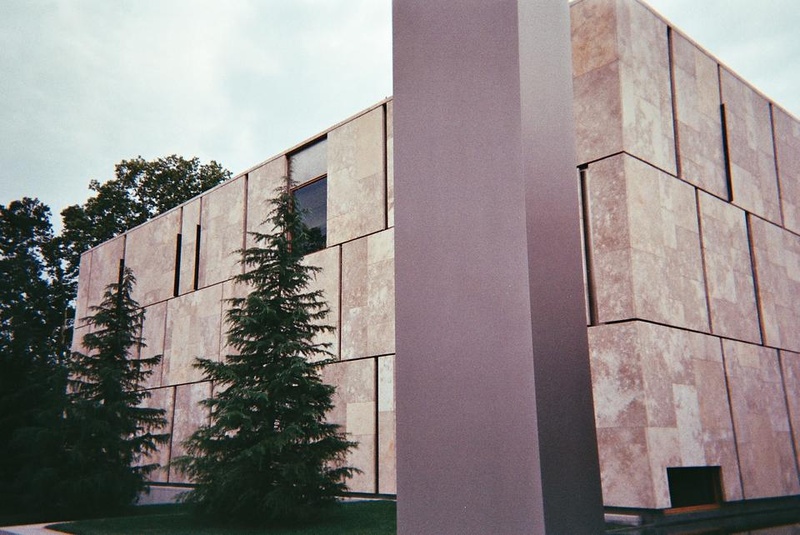PHILADELPHIA, Pennsylvania—To say The Barnes Foundation’s move from the suburban Merion, PA to Benjamin Franklin Parkway in downtown Philadelphia wasn’t easy would be gross understatement; it entailed a nearly decade-long legal battle to maneuver around the strict provisions in the trust of the late Albert C. Barnes, a pharmaceuticals magnate who spent his vast fortune on a trove of artwork that includes a dizzying number of Renoirs, Matisses, and Picassos.
But Barnes wanted his collection to remain just as he had left it forever more: arranged carefully into “ensembles,” with paintings hung from floor to ceiling in symmetrical designs, accented with antique metal door hinges like big, dark bullet points. Although the collection has moved, its layout has been meticulously recreated. Not a single 18th century chest or case of African masks is out of place.
One goes to the Barnes not merely to admire the masterpieces, but to have an Experience. And so, for the most part, visitors are happy to crane their necks and squint their eyes in order to best examine Van Goghs situated in uncomfortably tight corners or Prendergasts above door frames.
I, though, soon slumped on a bench, audio guide paused, gazing into the middle distance between myself and a wall of Renoirs which my thirteen year-old companion, Fiona, called “too peachy.” Perhaps I was tired from the early morning train ride. Or perhaps my summer internship at an art gallery had spoiled me. Just the previous afternoon, I had been standing alone with a Monet, my fingers skimming its surface as I took its dimensions with a tape measure.
The Barnes, an Experience to which I had been looking forward for months, seemed suddenly like much ado about, well, a lot of peachy Renoirs. Yes, the Barnes has its share--or more than its share--of masterpieces, but they are crowded together like so many gilt-framed sardines.
The next morning, my parents suggested we kill a few hours before our train back to New York visiting the Shofuso Japanese House and Garden in West Fairmount Park. Only a handful of other visitors had braved the sticky afternoon heat to explore Shofuso, and so we had the place mostly to ourselves. A cheery docent answered our questions, fanning herself against the swelter. When we ran out of things to ask, she left us to our thoughts.
As I stood at the edge of the koi pond, tossing in bits of fish food, I forgot, for a moment, that I was at a tourist site, where admission costs $4 for students and chopsticks go for $3 in the gift shop. The only things on my mind were the July sun and the graceful white and orange backs of the koi as they raised their lips to meet my offerings.
Read more in Opinion
The Illuminations of BirthrightRecommended Articles
-
Harvard To Institute Research Ethics TrainingHarvard has instituted a new policy that requires all science students conducting research to receive ethics training, University officials say.
-
 ‘False Priest’ Delivers Contrived Sermon
‘False Priest’ Delivers Contrived Sermon -
Obama's Budget Boosts Science FundingIn welcome news for universities, President Barack Obama’s 2012 budget proposal released on Monday focuses on promoting and investing in innovation and includes funding increases for science research and continued support for student financial aid.
-
Where Are They Now? Lin To Play in Charity ExhibitionNBA ownership cannot deprive players of their willingness to play the game of basketball. In the midst of a tantalizing ...
-
of Montreal Gets Personal and Experimental on Latest ReleaseFront man Kevin Barnes’s emotional sincerity adds a fiery depth that was not present in much of their past work. “Paralytic Stalks” is driven by this depth and reaffirms of Montreal’s creative genius while providing a glimpse into Barnes’s beautiful, troubled soul.
-
Harvard COI Policies Being RevisedHarvard schools must draft their policies and have them approved by the late August 2012 federal deadline, according to Mark Barnes, a senior associate provost and co-chair of the University Standing Committee on Financial Conflicts of Interest.














